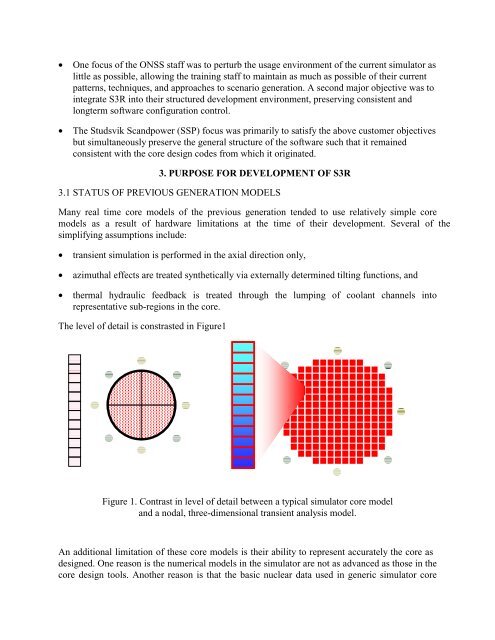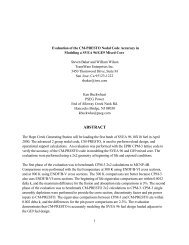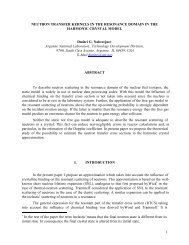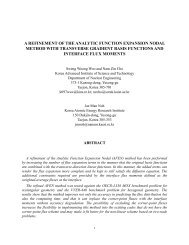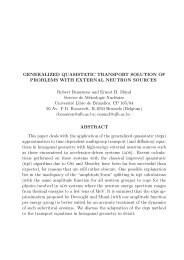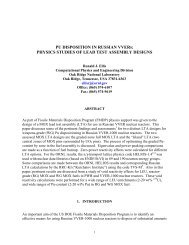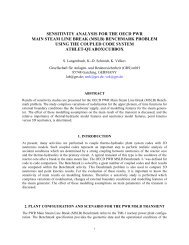J. Borkowski, K. Smith, D. Hagrman, and J. Rhodes, III
J. Borkowski, K. Smith, D. Hagrman, and J. Rhodes, III
J. Borkowski, K. Smith, D. Hagrman, and J. Rhodes, III
Create successful ePaper yourself
Turn your PDF publications into a flip-book with our unique Google optimized e-Paper software.
• One focus of the ONSS staff was to perturb the usage environment of the current simulator as<br />
little as possible, allowing the training staff to maintain as much as possible of their current<br />
patterns, techniques, <strong>and</strong> approaches to scenario generation. A second major objective was to<br />
integrate S3R into their structured development environment, preserving consistent <strong>and</strong><br />
longterm software configuration control.<br />
• The Studsvik Sc<strong>and</strong>power (SSP) focus was primarily to satisfy the above customer objectives<br />
but simultaneously preserve the general structure of the software such that it remained<br />
consistent with the core design codes from which it originated.<br />
3. PURPOSE FOR DEVELOPMENT OF S3R<br />
3.1 STATUS OF PREVIOUS GENERATION MODELS<br />
Many real time core models of the previous generation tended to use relatively simple core<br />
models as a result of hardware limitations at the time of their development. Several of the<br />
simplifying assumptions include:<br />
• transient simulation is performed in the axial direction only,<br />
• azimuthal effects are treated synthetically via externally determined tilting functions, <strong>and</strong><br />
• thermal hydraulic feedback is treated through the lumping of coolant channels into<br />
representative sub-regions in the core.<br />
The level of detail is constrasted in Figure1<br />
Figure 1. Contrast in level of detail between a typical simulator core model<br />
<strong>and</strong> a nodal, three-dimensional transient analysis model.<br />
An additional limitation of these core models is their ability to represent accurately the core as<br />
designed. One reason is the numerical models in the simulator are not as advanced as those in the<br />
core design tools. Another reason is that the basic nuclear data used in generic simulator core


